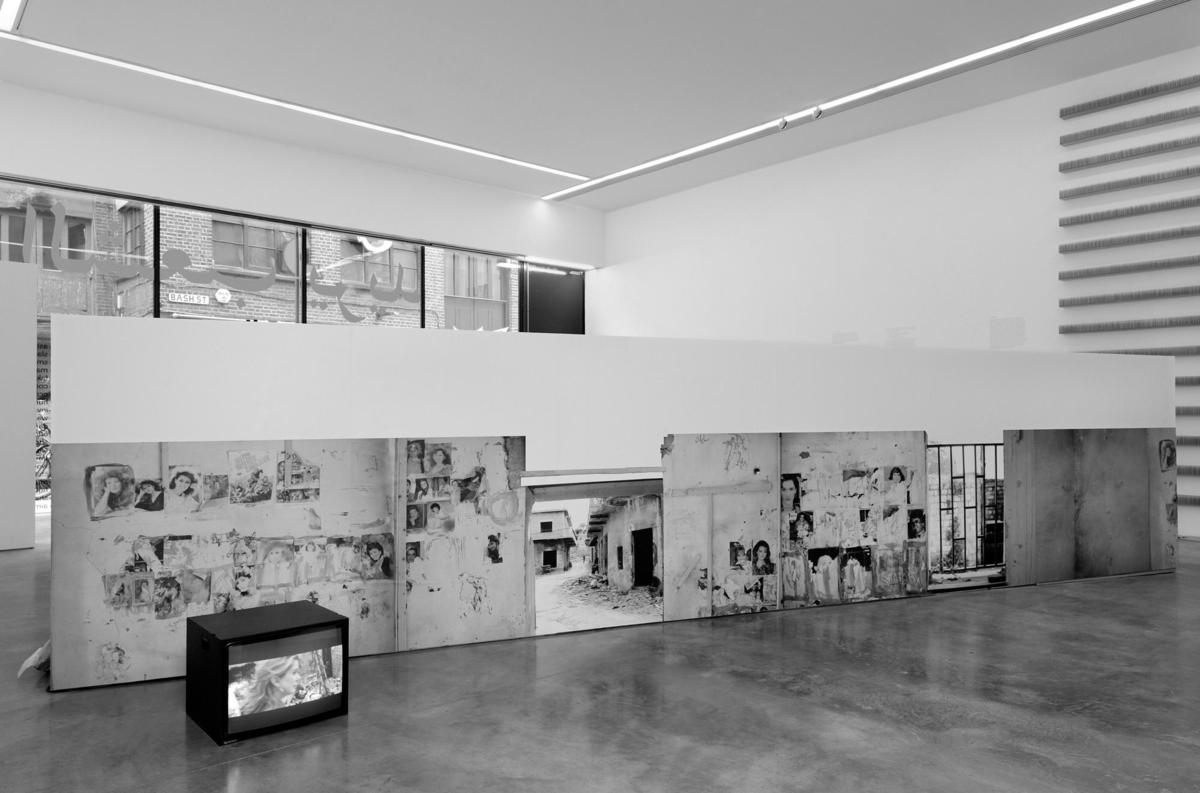
London
Rabih Mroué: I, the Undersigned — The People are Demanding
Institute of International Visual Arts
March 23–May 14, 2011
Written across Iniva’s impressive windows was a bold statement: “The People Are Demanding.” The slogan, drawn from the recent uprisings in the Middle East, was appropriated at the last minute by Rabih Mroué for his first solo exhibition in the UK. The artist’s readiness to abandon the first person — his original title was I, the undersigned — in favor of a collective “people,” seemed to mark his sensitivity to the rapidly changing sociopolitical climate, within and beyond his native Lebanon. The move from singular to collective riffed off the universality of these Arab protests (abetted by sites such as Facebook and Twitter), while at the same time throwing his subject matter to the floor.
The demands were listed in columns of verbs that veered from basic bodily needs (to breathe / to live) to whimsical desires (to lick / to bitch), interspersed with non sequiturs (to born / to pin). As the sun streamed through the windows, these assorted action words washed across the polished concrete floor, like shadow haikus, inviting the visitor to interact with the gallery space within. Mroué — who is an actor, director, playwright and contributing editor to The Drama Review — included a live performance as one component of this exhibition, and all of the works here spoke to his engagement with critical theater.
The eponymous window display set the tone for an exhibition in which personal narratives were shattered into textual shrapnel for the visitor to reassemble. The intimate subjects of Grandfather, Father and Son (2010) were clearly stated in the title, although their story was not immediately intelligible. Two glass vitrines displayed fading sheets of squared paper, meticulously inscribed with algebra. To the right, shelves reaching up to the ceiling were lined with index cards, each scrawled with catalogue entries written in Arabic. The average reader’s frustration at these two alien languages was alleviated by seventeen excerpts of text floating on the intervening wall, each titled, like parts in a play, with the names of characters or pivotal events in the plot: the boy to whom the story is dedicated… the uncle, the mother… the bomb that hit the house.
Only once the reader reached the final excerpts (to the right-hand side, where the reader of Arabic would have begun) could they understand how the strands of the story threaded together. The sense of discovery was pronounced as we came to realize that the manuscript of Fibonacci sequences had been written by his father “in spite of the shortage of provisions and food” during the Israeli occupation of Lebanon in 1982, while the index cards belonged to the library of his grandfather, a religious scholar turned communist. By suspending the visitor in a liminal state of unknowing, Mroué prevented his audience from getting utterly lost in the emotive stories surrounding his family. Perhaps a bit like Bertolt Brecht, the artist accentuated the process of collating information in order to tease out our suspicion, if not skepticism, toward the end product: the clean historical narrative, even his own.
Artistic subjectivity is a running theme for Mroué — highlighted by the distressed call of “Rabih! Rabih!” that repeatedly echoed across the ground floor. The voice (which irked and intrigued in equal measure) belonged to French actress Catherine Deneuve, who co-starred with him in the feature film Je Veux Voir in 2008, which lent its name to the mixed-media installation that cut through the center of the gallery. An MDF wall was spray painted with the words “down with this sort of thing.” The reverse had been wallpapered with images of a barricade in Beirut. A vintage monitor screen on the floor played footage of Deneuve searching for Mroué in the rubble of the city. The fictional stage (and the staged encounter) destabilized the surrounding narratives, reminding the visitor that all memories are inflected with subjective fantasies.
The point was accentuated by a modest video work by the window, in which the razing of a building was interrupted by the footage being continually rewound and then fast forwarded, making the collapsing building dance back and forth. A voiceover from Mroué explained his need to purge himself of these memories: “I am not telling in order to remember… on the contrary.” The artist addressed the visitor in a self-conscious manner and acknowledged that “this operation might appear repetitive.” But these structures of reiteration were crucial — the idioms, the looped footage, and the unabating call of “Rabih!” all suggested an engagement with pyschoanalytic theories of repetition compulsion in victims of trauma.
Mroué’s use of repetition also spoke to the essence of human fallibility, most powerfully considered in the video work upstairs. On Three Posters. Reflections (2004) analyzed found footage of one of Lebanon’s first suicide bombers, Jamal Sati, rehearsing his videotaped statement to the public. Drawn to the central paradox of watching a once-living man declare “I am the martyr,” the artist focused on this extraordinary figure, who was afraid of the camera but not of death. In doing so, he offered an intimate portrait of the impending martyr’s state of equivocation, which somehow stood in for Mroué’s own ambivalence toward radical action. Sati, caught between the desire “both to defer death and to withdraw from life,” was emblematic of an exhibition that refused to proffer truth or answer, existing instead in the uncomfortable territory between.